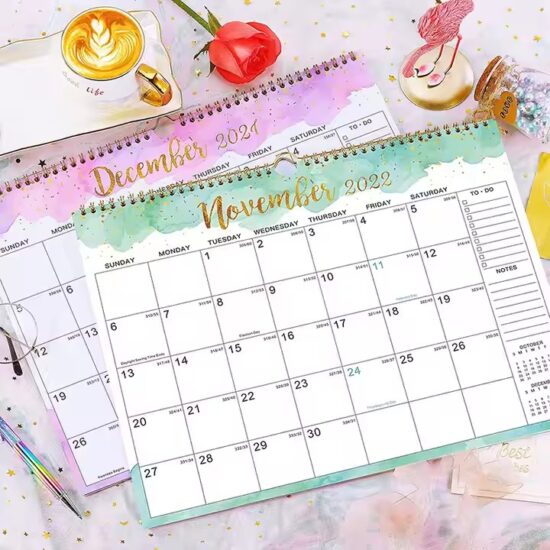bob@nbdho.com
Types of Paper Materials for Wall Calendars and How to Choose
Types of Paper Materials for Wall Calendars and How to Choose
Selecting the right paper material is a crucial step in producing high-quality wall calendars. The choice affects not only the calendar’s appearance and durability but also the printing quality and overall user experience. With a variety of paper types available, understanding their characteristics and suitable applications can help manufacturers, wholesalers, and designers make informed decisions.
1. Coated Paper
Coated paper has a smooth surface coated with clay or other substances that enhance print clarity and color vibrancy. It is one of the most popular choices for wall calendars because it delivers sharp images and rich colors.
-
Glossy Coated Paper: Reflective surface that makes colors pop. Ideal for photo-rich calendars but may cause glare under strong lighting.
-
Matte Coated Paper: Non-reflective surface offering a softer look and reduced glare. Good for elegant, understated designs.
2. Uncoated Paper
Uncoated paper has a rougher texture without a glossy finish. It absorbs ink differently, resulting in a more muted color palette and a natural feel.
-
Suitable for calendars with handwritten notes or where a tactile, organic look is preferred.
-
Often used in eco-friendly products as it may contain recycled fibers.
3. Cardstock
Cardstock is thicker and more durable than standard paper, providing sturdiness to calendars, especially for the cover or individual pages.
-
Offers rigidity that helps calendars hang flat on walls.
-
Commonly used for premium or deluxe calendar editions.
4. Recycled Paper
Made from post-consumer waste, recycled paper appeals to environmentally conscious consumers. It can be coated or uncoated and varies in texture and appearance.
-
Supports sustainability goals and may enhance brand image.
-
Slight variations in color and texture are common but add unique character.
5. Specialty Papers
Specialty papers include textured, metallic, or translucent papers that add a unique look and feel to calendars. They are used for high-end or artistic calendar designs.
-
Used sparingly to highlight covers or special sections.
How to Choose the Right Paper for Your Wall Calendar
-
Consider the Design and Purpose: Photo-heavy calendars benefit from glossy coated paper for vivid colors, while minimalist or eco-friendly designs may suit uncoated or recycled paper better.
-
Think About Durability: For calendars that will be used long-term or handled frequently, thicker cardstock or coated papers provide better durability.
-
Evaluate Cost vs. Quality: Higher quality paper may increase production costs but can enhance perceived value and customer satisfaction.
-
Assess Environmental Impact: If sustainability is a priority, recycled or FSC-certified papers are excellent choices.
-
Test Print Samples: Always request paper samples and test prints to ensure color accuracy and texture meet your expectations.
Conclusion
Choosing the right paper material is essential to creating wall calendars that are visually appealing, durable, and aligned with brand values. By understanding the properties of various paper types and matching them with the calendar’s intended use, businesses can optimize production quality and customer experience. Careful paper selection helps ensure your wall calendars stand out in a competitive market.

